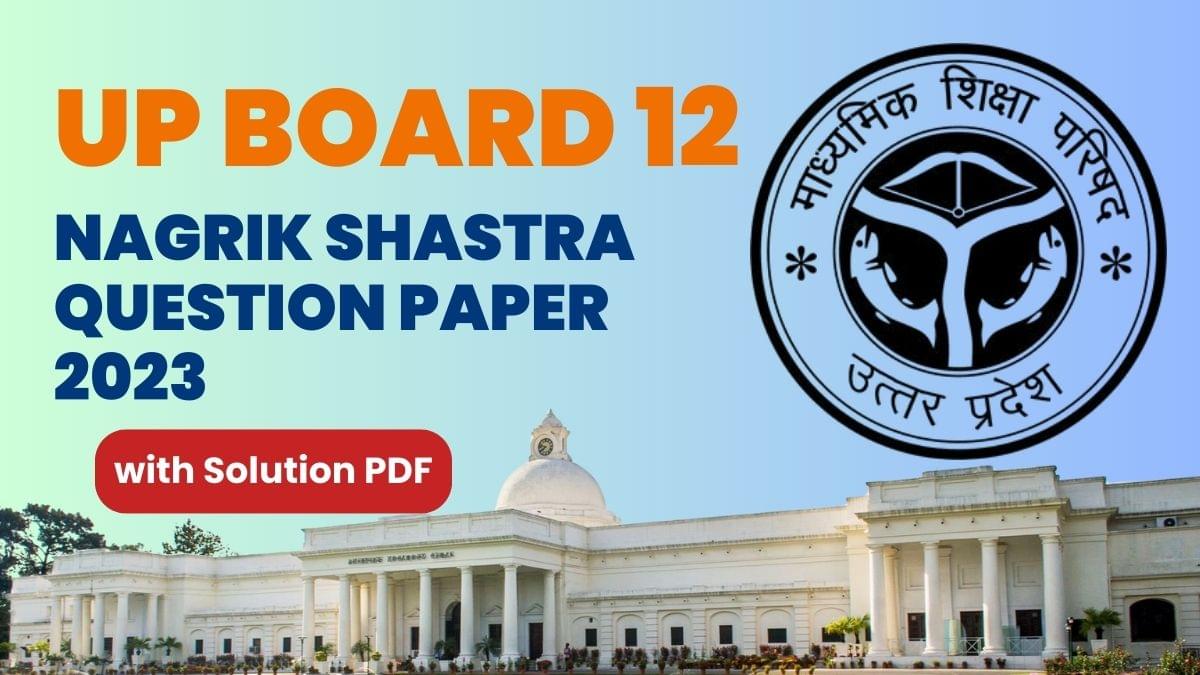UP Board Class 12 Nagrik Shastra Question Paper 2023 with Answer Key Code 323 AW is available for download. The exam was conducted by the Uttar Pradesh Madhyamik Shiksha Parishad (UPMSP) on February 28, 2023 in Afternoon Session 2 PM to 5:15 PM. The medium of paper was English and Hindi. In terms of difficulty level, UP Board Class 12 Nagrik Shastra paper was . The question paper comprised a total of 32 questions.
UP Board Class 12 Nagrik Shastra (Code 323 AW) Question Paper 2023 with Answer Key (February 28)
| UP Board Class 12 Nagrik Shastra (Code 323 AW) Question Paper with Solutions PDF | Download PDF | Check Solutions |

Where is the International Court of Justice located?
Who founded the Indian National Congress?
Which country used the atomic bomb during the World War-II?
Who was the President of Soviet Union at the time of the dissolution of Russia?
When did the Cold War end?
What is the Misterist Treaty related to?
Who Nationalised banks in India?
When did Hyderabad merge with India?
When was Bangladesh formed?
When was the 'Dalit Panthers' organization formed?
When was NATO established?
ASEAN was established after the signing of which declaration?
When was the SAFTA agreement signed?
What is the name of the environmental unit of UNO?
What is the Kyoto Protocol related to?
What was the name of the activist who went on fast for the linguistic states?
When and by whom was the emergency declared?
Who led the rail strike of 1974?
Toddy (Anti-arrack) movement is related to which state?
What is AASU?
What are the main highlights of ASEAN Vision-2020?
What are the functions of the Security Council?
What were the main steps decided in 2005 to make the United Nation Organisation more relevant?
What was the 'Two Nations Theory'? What was its result?
What changes take place in the governance system after the declaration of the emergency?
What issues were raised by Dalit Panthers?
What makes the European Union an effective regional organization?
Who are called Indigenous people? Discuss their position in India.
What arguments did Nehru use to make India secular?
What is the difference between autonomy and independence? Mention the positive aspects of autonomy.
What factors forced Gorbachev to reform the Soviet Union? What were its consequences?
The Shah Commission was appointed by Janata Party in 1977. Why was this commission appointed and what were its finding?
What is Shock Therapy? And what were its results? Discuss.
What changes took place in Indian Politics after the emergency? Discuss.



Comments